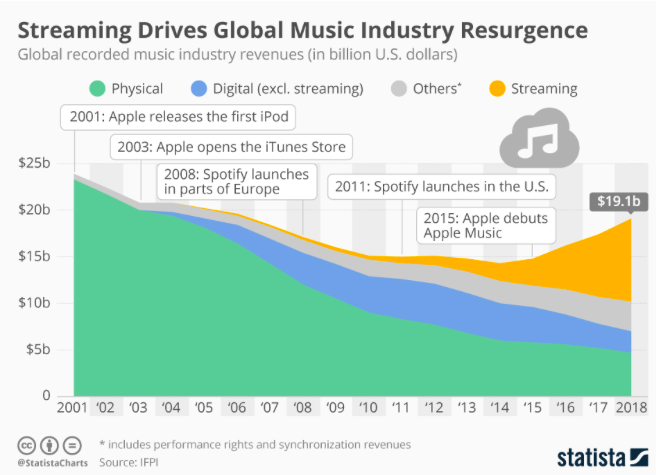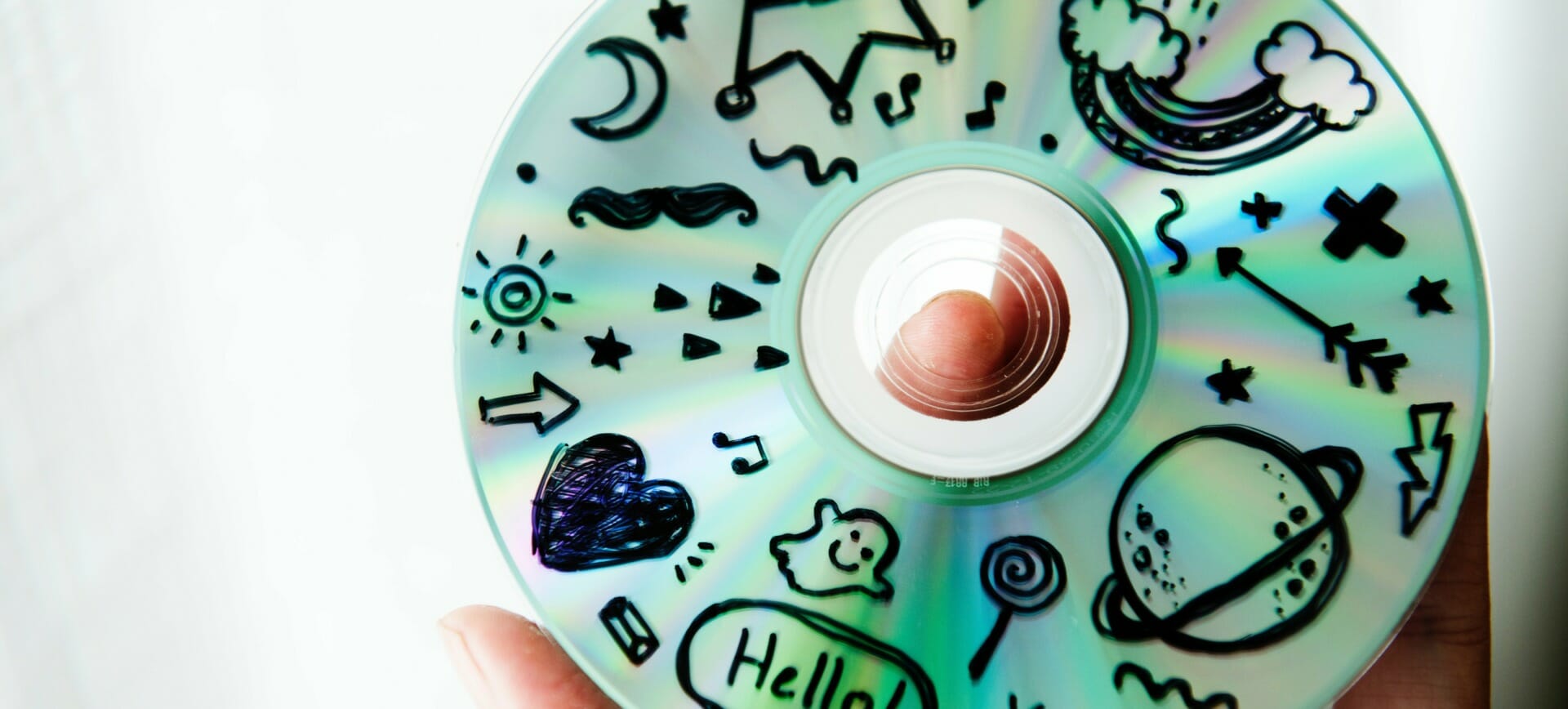English
The Music Industry: How Innovation stood still for a Decade
The first music video ever to be broadcast on MTV in the US, airing at 12:01 a.m. on August 1st in 1981, summarized the end of an era in about 4 minutes. As shocking as this was, no one realized back then that an even more profound transition would hit the music industry 20 years later.


The first music video ever to be broadcast on MTV in the US, airing at 12:01 a.m. on August 1st in 1981, summarized the end of an era in about 4 minutes. As shocking as this was, no one realized back then that an even more profound transition would hit the music industry 20 years later.
You probably know the introduction of the CD led the industry into a golden age. Ironically, at its height in 1999, with recorded music revenues of $25.2 billion globally, Napster was created. Remember Napster? The platform that everyone crucified? Let me tell you about its origin. Napster was one of the first peer-to-peer file sharing platforms, taking advantage of the digital audio format mp3. Suddenly, the CD as a physical product felt clumsy and inconvenient. The notion of digitized music was novel and the idea of paying $10 to $20 for 12 tracks seemed outdated. By 2010 sales of physical products had decreased by more than 60% to only $8.9 billion. At the same time, the sales from digital music skyrocketed to $4 billion.
How did the Music Industry Deal with these Changes?
As you can imagine, not that well. The industry desperately tried to maintain the status quo of selling physical products instead of embracing the idea of digitizing the sale of their product.

The result of these early efforts to keep its new tech competition at bay?
Napster was vilified as the platform that had enabled piracy on a large scale and was bombarded with lawsuits. The consumer mindset however, had shifted and grown accustomed to the convenience of portable and digital music files that could be managed easily at the home computer.
It wasn’t until Apple introduced the iPod along with the iTunes service that the industry started to acknowledge that change was inevitable.
It is widely accepted that iTunes, in its prime, had become an overpowering force in the digital sale of music. Because they fought technological advancements and new business models for years instead of trailblazing and setting new standards themselves, labels lost significant power, importance and revenue to tech giants that knew all too well how to serve the needs of the modern consumers.
How Spotify paved the way for music streaming
Then in 2008, a new player entered the music industry – Spotify. Thanks to Spotify, the idea of accessing and listening to music without ever truly owning it became mainstream. This time around, the music industry was smarter and supported the new technology early on. They realized in an age where technology companies are dictating the way music is consumed, they still had significant leverage – the rights to the music catalog of their artists. And with a growing number of streaming services, who can all be pitted against each other, the music industry is finally finding its footing again.

The numbers indicate that labels are on an upwards trend again. The global revenues of recorded music are growing at a rate that was unimaginable in the early 2000s. Even better, Goldmann Sachs has projected a future growth that would go beyond what was considered to be the peak of the music industry in the late 90’s. According to their analysis by 2030 the industry could reach a global revenue level of $40 billion annually, with $34 billion being directly attributed to streaming.
What can we learn?
In retrospect, the music industry can be considered one of the first victims of digitalization.
Selling music at its core is nothing more than a very specific transactional business case. Due to the nature of how the product is consumed, you listen to the song, but you don’t need to own it, unique business models can arise like audio streaming. To grow in this industry, the key is to always be aware of new technologies.
The question remains, what would the music industry have burgeoned into if the major players had embraced change early on instead of holding on to an antiquated business model? Labels will likely still hold the power over distribution and could have more actively shaped the way music is being monetized. It’s unlikely they would have come up with a model more profitable than the good-old CD, but they could have played a more significant role in the digitization and modern distribution of music instead of letting tech giants dictate the requirements and merely following suit.
